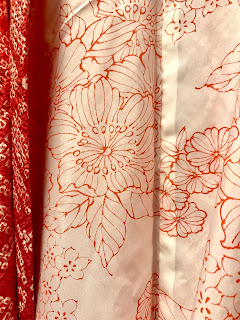This suzani
This suzani from Urgut Uzbekistan has scorpions; the cross, which is a solar symbol and bees, others, the evil eye. The silk is like fine ribbons. The zigzags create tension of the sun pulsing (around each roundel) innovative and found in the older Suzanis of the Samarkand and Urgut styles which were pre- Islamic designs.
























































